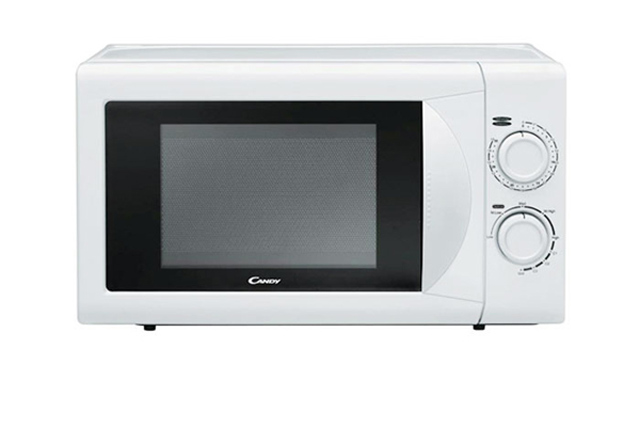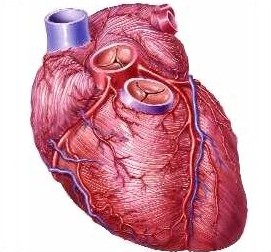Incredible but great inventions
History is always full of accidental inventions that change the life of the world, below is one of those inventions.
The ones I accidentally changed the world
1. Microwave oven
In 1946, Percy Spencer, a radar research engineer, was experimenting with the vacuum tube of the Tungsten, an unusual thing happened, the candy bar in his pocket suddenly melted.

The scientist immediately placed the corn seeds, then the chicken eggs were near the tube and he observed. It is strange! The corn grains burst, and the egg yolk was blistering.
Spencer realized that the concentration of the density of microwaves creates a large source of energy , which can cook food quickly.
A year later he launched the first microwave oven, smaller designs designed later, revolutionizing cooking facilities.
2. Artificial heart valve

David Saucier is a NASA expert, researching energy pumps in rocket engines in the 1980s. While recovering from a heart surgery by Dr. Michael DeBakey, he came up with the idea. Use the technique in the pump to create a heart valve for patients.
Saucier presented this idea to physicists at Baylor College of Medicine. For two decades, NASA and Dr. DeBakey worked hard and created a pink heart valve shaped like an angled oblique eraser, which can help patients who live for 2 years or more while waiting. heart transplant.
3. Internet

After the Soviet Union launched the first satellite Sputnik I into space in 1957, overtaking the United States in space, the US Department of Defense established an advanced research project center to create a driving force for innovation. , creation.
An expert, Joseph Licklider, found a way to protect the United States from airborne atomic attacks, and he believed that the information network was the key to this project.
The first information network was used in October 1969 at the University of California. By 1990, the US National Science Foundation expanded this network to link universities together. And this system has been widely used in life since 1992.
4. Stainless steel (stainless steel)

Twentieth-century weapons manufacturers hired Harry Brearly , an English steel specialist, to make stainless steel barrels.
As soon as he tested the new material with many corrosive substances like lemonade, Harry Brearly realized that this was the ideal material for making kitchen utensils like knives, scissors, spoons, forks .
5. Explosives

Swedish chemist Alfred Nobel invented dynamite in the process of stabilizing nitroglycerin , an explosive liquid.
During nitroglycerin transport, Nobel discovered one of the leaking cans and a sedimentary rock mixture called kieselguhr had absorbed the liquid perfectly.
Because nitroglycerin is very dangerous when processed in liquid form, Nobel used kieselguhr as a stabilizer for this explosive solution.
Later, Nobel found a way to mix explosives with kieselguhr without losing the effects of explosives. He announced his product in 1867 and named it "dynamite" .
6. Baked cornflakes

It all began with the forgetfulness of Will Keith Kellogg when he worked as an assistant to his brother at Battle Creek Nursing Institute. While cooking for the patient, Kellogg accidentally left the flour to make bread outside for several hours.
When he returned, he found that they became spongy. Curious to see what would happen, Kellogy put the powder in the oven and created a crunchy dish that the patients responded enthusiastically.
Will Kellogg tested the new formula with other grains and was incredibly successful when using corn.
This is the starting point of Kellogg , a company specializing in the production of popcorn and ready-to-eat corn products later on.
7. X-rays

This is not the first electromagnetic wave to be accidentally discovered.
On the evening of November 8, 1895, when Wilhelm Roentgen was conducting an experiment using cathode rays, he suddenly discovered that some pieces of fluorescent cardboard in the room glowed even between the cathode rays and those cardboard sheets have very thick separators.
The only explanation is that the light has penetrated the hard divider. Roentgen found the nature of the secret ray he temporarily named X-ray and gave him the first Nobel Prize in physics in 1901.
8. Super glue

During the production of plastic viewfinders, Dr. Harry Coover , a researcher at Kodak Research Institute, accidentally discovered a type of binder that synthesized from cyanoacrylate. However, at that time, he thought that the substance was too sticky to be used.
Years later, Coover realized the potential of this substance when it could create an unbelievable bond. In 1958, 16 years after its discovery, the substance was registered for patents and marketed as " super glue ".
- 11 incredible 'inventions' come from the past
- Great inventions did not win the Nobel Prize
- 10 interesting inventions of ancient Egyptians (II)
- Great but great inventions
- The incredible technology people learn from nature
- 15 quirky inventions but the idea is quite interesting
- Childhood of great geniuses
- The brilliant inventions of mankind
- The inventions awarded Nobel prizes change the world medicine
- 15 extremely strange inventions but worth the Nobel prize
- Marvel at 8 incredible facts that seem like a myth
- After tens of years, NASA finally revealed its 'secret' inventions
 Daily use inventions come from universities
Daily use inventions come from universities Special weight loss device helps prevent appetite
Special weight loss device helps prevent appetite 8 inventors were killed by their own inventions
8 inventors were killed by their own inventions Iran invented a motor car powered by water
Iran invented a motor car powered by water